| –
| Secure universal dial gauge bracket -VW 387- to turbocharger. |

Note | The dial gauge linkage and the vacuum unit linkage must align. |
| –
| Secure dial gauge -VAS 6341/1- with dial gauge extension, 30 mm -VAS 6341/3- and flat pickup -VAS 6341/4- to universal dial gauge bracket -VW 387-. |
| –
| With pressure at 0 bar, set dial gauge -VAS 6341/1- to 1 mm preload. |
| –
| Operate hand vacuum pump -VAS 6213- until a pressure of 800 mbar is displayed on turbocharger tester -V.A.G 1397A-. |
| –
| Vent system via pressure control valve -VAS 6342- so that pressure reading drops to 0 mbar. |
| –
| Repeat this procedure approx. 3-5 times. |

Note | This procedure is intended to prevent the vacuum unit bypass flap or linkage from jamming. |

Note | The dial gauge values (mm) listed here include the 1 mm preload that is initially set on the gauge. |
| –
| Vent system via pressure control valve -VAS 6342- so that pressure reading drops to 0 mbar. |
| –
| Set dial gauge -VAS 6341/1- to 0. |

Note | t
| The following measurements must be performed in continuous sequence. Do not allow the pressure to drop to 0 between measurements. |
| t
| Do not knock against linkage throughout the entire measurement procedure. |
| –
| Operate hand vacuum pump -VAS 6213- until turbocharger tester -V.A.G 1397A- indicates 500 +/- 5 mbar. |
| –
| Read off and note value indicated on dial gauge -VAS 6341/1-. |
| –
| Operate vacuum pump -VAS 6213- until turbocharger tester -V.A.G 1397A- indicates 800 +/- 5 mbar. |
| –
| Vent system via pressure control valve -VAS 6342- so that pressure reading drops to 500 +/- 5 mbar. |
| –
| Read off and note value indicated on dial gauge -VAS 6341/1-. |
| –
| Add values 1 and 2 together and divide by 2. |
| –
| The result (mean value) should be 5.5 +/- 0.25 mm. |
| –
| Correct setting if the result (average) is not 5.5 +/- 0.25 mm, tighten lock nut hand-tight and repeat measurement. |
| –
| If the result (mean value) is 5.5 +/- 0.25 mm, tighten the lock nut to 9 Nm and secure with sealing paint. |
| –
| Secure retaining clip to vacuum unit linkage. |
| Installation is carried out in the reverse order. When installing, note the following: |
| t
| Renew seals, gaskets and self-locking nuts. |
| t
| Hose connections and hoses for charge air system must be free of oil and grease before assembly. |
| t
| Secure all hose connections with the correct type of hose clips (same as original equipment). |
| t
| If renewed, place seal in groove of charge air hose. Ensure seal is correctly seated in groove. |
| t
| Lightly moisten seal with engine oil. |
|
|
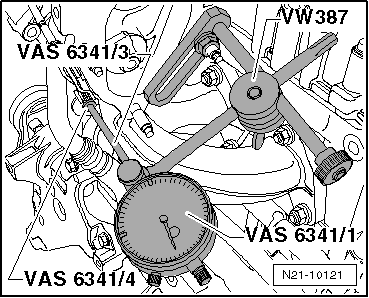
|
 Note
Note
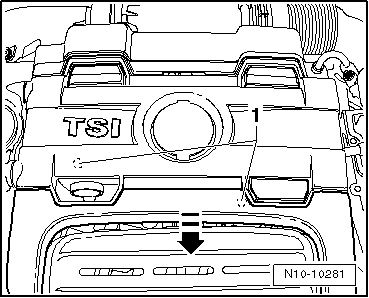
 Note
Note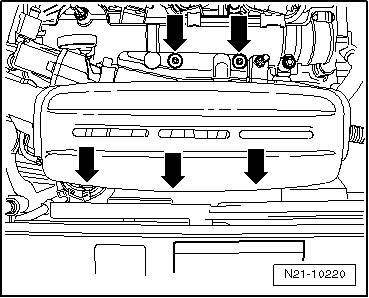
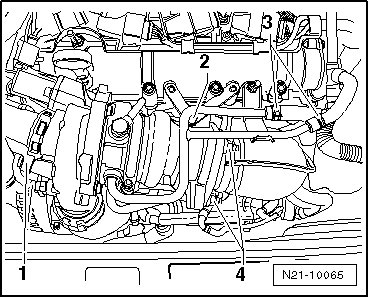
 Note
Note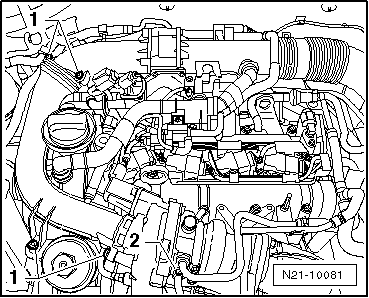
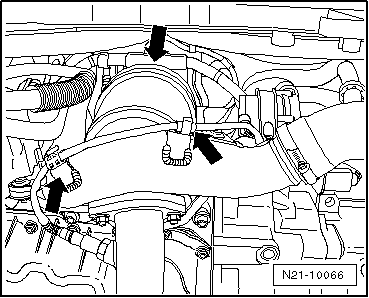
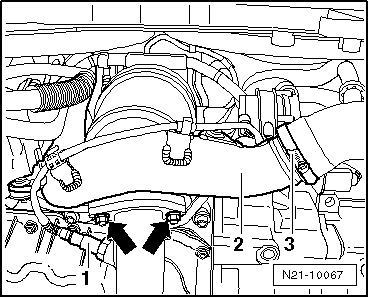
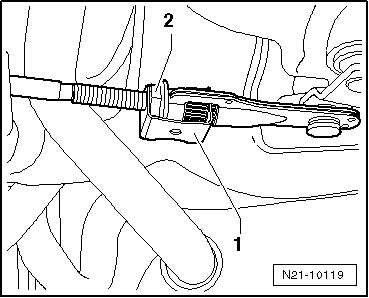
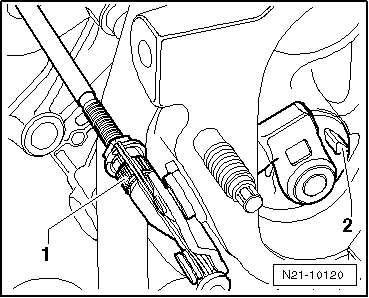
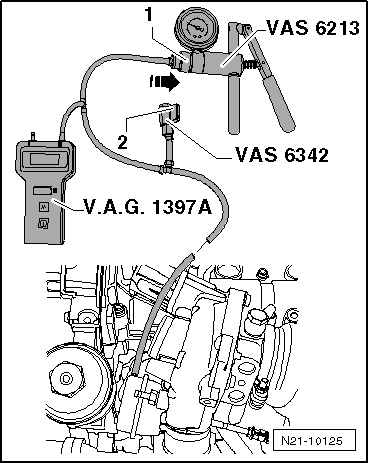
 Note
Note Note
Note Note
Note Note
Note
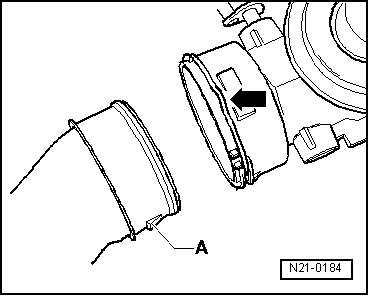

 Caution
Caution